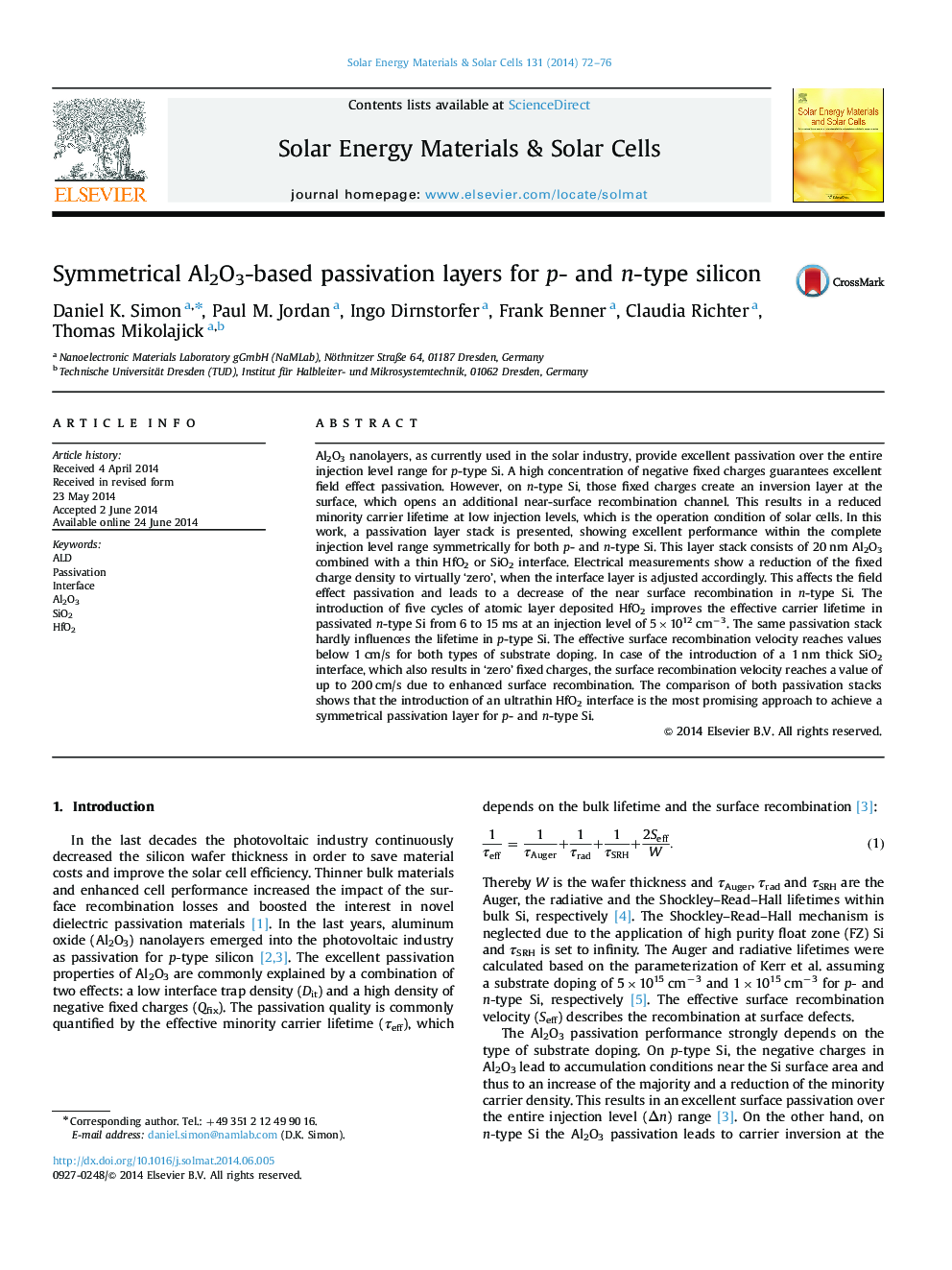| کد مقاله | کد نشریه | سال انتشار | مقاله انگلیسی | نسخه تمام متن |
|---|---|---|---|---|
| 77951 | 49310 | 2014 | 5 صفحه PDF | دانلود رایگان |

• Symmetrical passivation layers are presented for p- and n-type Si.
• ALD Al2O3 passivation layers are combined with an ultrathin HfO2 or SiO2 interface.
• Applied interfaces reduce field effect and maintain chemical passivation.
• High lifetimes found on p- and n-type Si independent from the injection level.
• HfO2 interfaces are superior to SiO2 interfaces.
Al2O3 nanolayers, as currently used in the solar industry, provide excellent passivation over the entire injection level range for p-type Si. A high concentration of negative fixed charges guarantees excellent field effect passivation. However, on n-type Si, those fixed charges create an inversion layer at the surface, which opens an additional near-surface recombination channel. This results in a reduced minority carrier lifetime at low injection levels, which is the operation condition of solar cells. In this work, a passivation layer stack is presented, showing excellent performance within the complete injection level range symmetrically for both p- and n-type Si. This layer stack consists of 20 nm Al2O3 combined with a thin HfO2 or SiO2 interface. Electrical measurements show a reduction of the fixed charge density to virtually ‘zero’, when the interface layer is adjusted accordingly. This affects the field effect passivation and leads to a decrease of the near surface recombination in n-type Si. The introduction of five cycles of atomic layer deposited HfO2 improves the effective carrier lifetime in passivated n-type Si from 6 to 15 ms at an injection level of 5×1012 cm−3. The same passivation stack hardly influences the lifetime in p-type Si. The effective surface recombination velocity reaches values below 1 cm/s for both types of substrate doping. In case of the introduction of a 1 nm thick SiO2 interface, which also results in ‘zero’ fixed charges, the surface recombination velocity reaches a value of up to 200 cm/s due to enhanced surface recombination. The comparison of both passivation stacks shows that the introduction of an ultrathin HfO2 interface is the most promising approach to achieve a symmetrical passivation layer for p- and n-type Si.
Journal: Solar Energy Materials and Solar Cells - Volume 131, December 2014, Pages 72–76